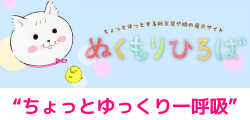ホーム › 掲示板(ご質問等) › 【“ぬくもろひろば” のこと】 › Crafting a Modern UI with CSS3 Color Gradients
- このトピックは空です。
-
投稿者投稿
-
AntonTumma
ゲストThis is the part where we discuss some tips for designing a website with accessibility in mind using CSS media types.
What are CSS Media Types?
CSS media types are used to define different styles for different media types. By using CSS media types, you can create a responsive design that adapts to the specific needs of different users. Some common CSS media types include screen, print, speech, and braille. By targeting these media types in your CSS, you can ensure that your website looks and functions correctly across a variety of devices and user preferences.
Use Relative Units for Layout
When designing a website with accessibility in mind, it is important to use relative units for layout. Instead of using fixed pixel values for your layout, consider using relative units such as percentages or ems. This will allow your design to adapt to different screen sizes and user preferences, making your site more accessible to a wider audience.
Optimize for Screen Readers
Another important aspect of designing a website with accessibility in mind is optimizing for screen readers. Screen readers are assistive technologies that read aloud the content of a website to users who are visually impaired. By using CSS media types to target the speech media type, you can create styles that are specifically designed for screen readers, making your content more accessible to all users.
Provide High Contrast Styles
High contrast styles are essential for users with visual impairments. By using CSS media types to target the braille media type, you can create high contrast styles that make your content easier to read for users with low vision. Providing high contrast styles not only improves accessibility but also enhances the overall user experience of your website.
Test Across Different Devices
Before launching your website, it is important to test it across different devices and user preferences. By using CSS media types to target different media types, you can ensure that your design looks and functions correctly on a variety of devices, including smartphones, tablets, and desktop computers. Testing across different devices will help you identify any accessibility issues and make necessary adjustments to improve the user experience.
Conclusion
Designing a website with accessibility in mind is essential for providing a better user experience and reaching a wider audience. By using CSS media types to create a responsive design that adapts to different devices and user preferences, you can ensure that your content is accessible to all users. Remember to use relative units for layout, optimize for screen readers, provide high contrast styles, and test across different devices to create a website that is both accessible and user-friendly.
By following these tips for designing a website with accessibility in mind using CSS media types, you can create a website that is not only visually appealing but also accessible to all users. Start implementing these tips today and make your website more inclusive and user-friendly. Accessibility is not just a feature, it’s a necessity in today’s digital world.
Find out more details here: https://sunriseblogclub.com/medical-coding-course-online-learn-from-experts/Best Practices for Naming Pseudo-Classes in CSS
JorgeSef
ゲストMexican Easy Pharm: Mexican Easy Pharm – Mexican Easy Pharm
Rodneyabugh
ゲストmedicine in mexico pharmacies https://mexicaneasypharm.shop/# mexican drugstore online
buying prescription drugs in mexico onlineRodneyabugh
ゲストbuying prescription drugs in mexico online https://mexicaneasypharm.com/# reputable mexican pharmacies online
mexico drug stores pharmaciesAlbertveick
ゲストhttp://semapharm24.com/# generic rybelsus tabs
buy prednisone online without a prescriptionAlbertveick
ゲストhttp://semapharm24.com/# semaglutide tablets store
prednisone 30 mg dailyAlbertveick
ゲストhttp://semapharm24.com/# rybelsus semaglutide tablets
prednisone over the counter australiaAlbertveick
ゲストhttps://predpharm.com/# Pred Pharm
prednisone online australiaAlbertveick
ゲストhttp://dappharm.com/# priligy
prednisone 10mg buy onlineAlbertveick
ゲストhttps://predpharm.shop/# PredPharm
prednisone 5mg costAlbertveick
ゲストhttps://cytpharm.shop/# cytotec buy online usa
prednisone 5 mgAlbertveick
ゲストhttps://cytpharm.shop/# CytPharm
400 mg prednisoneAlbertveick
ゲストhttps://cytpharm.com/# Cyt Pharm
prednisone 5 mg tablet without a prescriptionAlbertveick
ゲストhttp://kamapharm.com/# Kama Pharm
prednisone in mexicoAlbertveick
ゲストhttps://dappharm.shop/# dapoxetine online
buy prednisone online usa -
投稿者投稿




